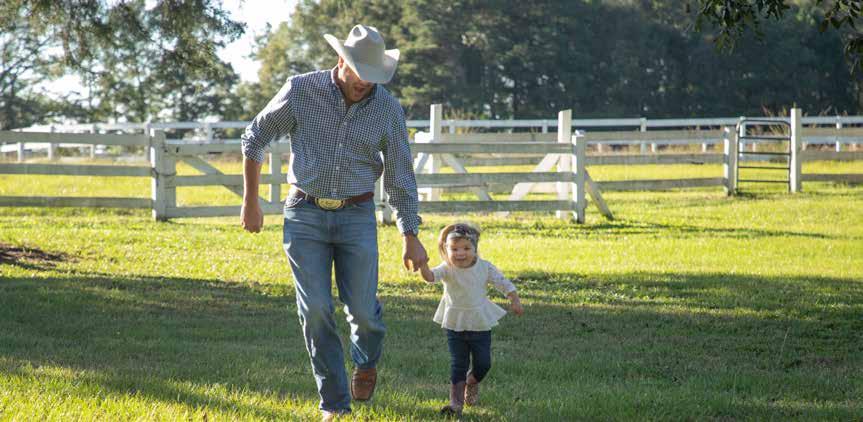
3 minute read
The Good Ole Days, By Dale Sandlin
Do you ever wish you could go back in time? Since the age of 5, I’ve been fascinated by the potential to one day experience the past. That was when I fell in love with my favorite movie, Back to the Future. I often thought about what it would be like to be Marty McFly or Doc Brown and visit a unique period in our history. I would often consider going back to the “Old West” – until I remembered how much I appreciate air conditioning and indoor plumbing.
These days, I’d settle for going back to before technology made our lives so easy. While we have the luxury of knowledge in the palm of our hand, there’s something to be said for when times were much simpler. It seems like a never-ending effort to inundate our every moment with something else vying for our attention. Emails, texts, phone calls, notifications, Snapchats, Facebook reminders – and name any other social media service – are all in competition. It’s often difficult to set them aside long enough to have a moment of peace to think, to be able to complete a task, or to spend time with family. For many of you, join me in thinking back before widespread technology, and remember what it was like to have to make plans to meet up without the luxury of getting to communicate with someone in real time by cell phone; or to have to write a letter without the use of a word processor; or to have to wait for an important letter in the mail. I’d contend that those were the “good ole days.”
Advertisement
There is something to be said for the luxury of today. Our industry has experienced a consistent improvement in technology. We’ve gone from hand-tabulating and tracking our herds, to keeping herd records through spreadsheets – and now to the convenience of doing it from our phones via the Internet and an app. We’ve gone from a visual inspection of cattle traits to tracking these traits through EPDs, and now through DNA testing of individual cattle to select matches to achieve our herd goals. Add to this the improvements in precision agriculture, and our industry has built on the foundation of those who came before us.
As an industry, we’ve taken these tools and have improved in many different ways. For example, the use of antibiotics in our herds has become even more effective. The use of low-dose antibiotics in feeds has improved cattle digestion; with their use, cattle on this type of ration need less feed and produce less waste. The use of these antibiotics has also reduced the limiting occurrence and severity of diseases in cattle.
Another improvement has been in the implementation of implants as a growth promotant. Research in the use of these implants has shown an improvement of almost 13 percent in stocker cattle average daily gain, according to a study conducted by Lawrence and Ibaruru in 2008. They also found that implants can also increase ribeye area and carcass yield.
Vaccines are another way that our industry has developed consistent improvement. By compounding different medicines, we can fight multiple pathogens in a single product. If the pathogen isn’t present, the vaccine has no effect. The use of vaccines is a simple solution to ensure the health of our cattle; this, in turn, ensures that we’re doing what is best for our cattle.
These are just some of the ways that we’ve seen improvements through technology. With continued research, our industry has a bright future ahead, but we must continue to ensure that we invest in those providing that research. GCA’s Legislative Committee has designated one of our main legislative priorities this next session: to secure additional funding for UGA’s Animal Dairy Science Department to improve research facilities and ensure that the faculty and staff are afforded the best possible conditions to provide implementable solutions for our members’ operations.
The likelihood of us returning to a simpler time is long gone, but we’re able to take advantage of these improvements to better our operations. These luxuries weren’t afforded to our ancestors, but they provide a golden opportunity for future producers. Though we can’t go back in time – right now at least – I can’t wait to see what the future holds.
The Good Ole Days
By Dale Sandlin









